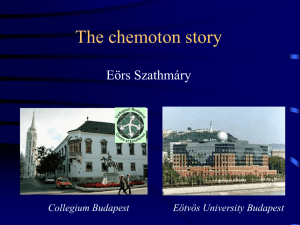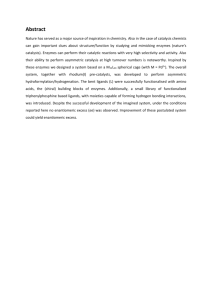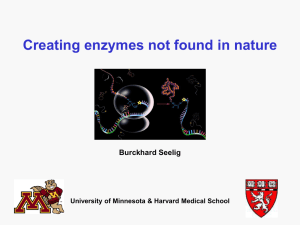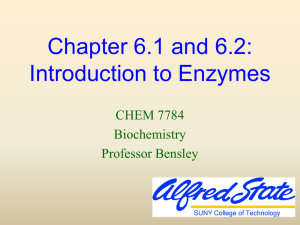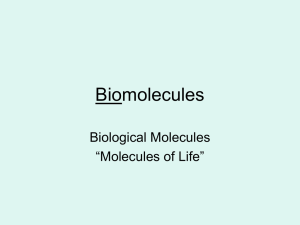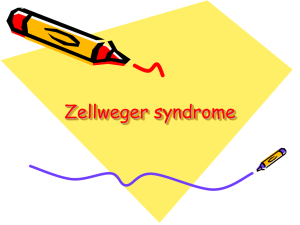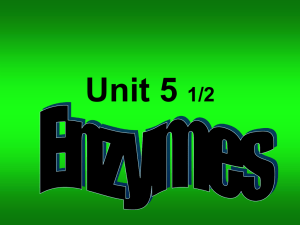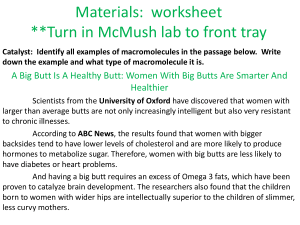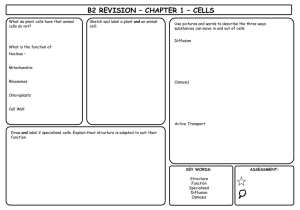Units of evolution
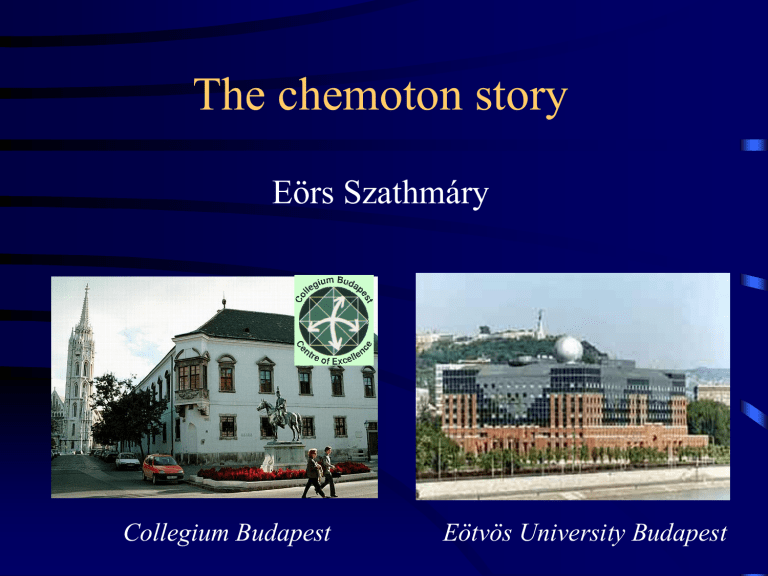
The chemoton story
Eörs Szathmáry
Collegium Budapest
Eötvös University Budapest
Tibor Gánti
• Born in 1933
• A chemical engineer
• Patents in industrial biochemistry
• Syntheses using the controlled operation of enzymatic reaction networks
• First book on molecular biology in Hungary (1966)
The first edition of the Principles
• A serious book in a popular science disguise
• There was no other way to publish
• Proposal included the term “chemoton”
• ‘reductionist’ and
‘vitalist’ at the same time!
The latest edition: OUP 2003
• After several editions in Hungarian
• Two previous books
(the Principles and
Contra Crick ) plus one essay
• Essays appreciating the biological and philosophical importance
The investigation of life criteria: absolute criteria
1. Inherent unity
2. Metabolism
3. Inherent stability
4. Information carrying subsystem
5. Processes regulated and controlled by a programme
VERBAL AND PHENOMENOLOGICAL
Quest for a biological minimal system
• Chemical supersystem
• Should be conceptually as simple as possible
• Must not necessarily be realizable in its simplest form
• Comparison with other elementary units
(such as the elementary cell in crystallography)
• FORMAL AND EXACT
The eukaryotic cell is very complex—too complex!
The simplest cells are bacterial
• THUS we want to explain the origin of some primitive bacterium-like cell
• Even present-day bacteria are far too complex
• The main problem is the genetic code
Gánti’s chemoton model metabolism template copying membrane growth
ALL THREE SUBSYSTEMS ARE AUTOCATALYTIC
Organisation of chemical systems into a supersystem (1974)
• CHEMOTON: a particular supersystem which is also a biological minimal system
Chemical cycles are metabolic engines (1971)
• The cycle as a whole is a catalyst
• The Noble prize of
Szent-Györgyi was awarded for catalysis by fumaric acid
• Krebs has recognized the whole cycle
• Enzymes are superimposed on the metabolic cycle
Enzymes and cycle stoichiometry
Very important: the cyclic process sign with the number of turns
At the heart of the chemoton…
• …there is a metabolic cycle
• It is autocatalytic
• Produces the raw materials for the functioning of all subsystems at the expense of the difference between nutrients and waste
• Has homeostatic capacity
• The Calvin cycle and the reductive citric acid cycle are such core systems (controlled by enzymes) today
A self-reproducing vesicle (1978)
• Metabolism and reproduction
• No genetic subsystem
The informational subsystem
• The pV n of V molecule consists of n molecules
• Result of template polycondensation
•
R is the by-product, necessary for the formation of the membranogenic molecule
T
• Information carried by quantity, frequency
(composition), or sequence of signs
• Importance of sequence increases in evolution
The fission of the chemoton
• Membrane surface doubled
• Quantity of internal materials doubled
• Assume spherical shape
• Concentration cannot be kept with a growing sphere: volume increases with the cubic of the radius
• Volume of sphere with a surface are doubled would be more than doubled
Chemoton fission II
• More detailed calculations based on continuum mechanics
• Continuous distortion of the spherical shape
• Final resolution: two new spheres with size identical to that of the parental sphere
• STRICT STOICHIOMETRIC COUPLING
BETWEEN THE GROWTH OF THE
SUBSYSTEMS
Most biological reactions are catalyzed by protein enzymes
Without catalysis the reaction is slow
S P
The catalyzed reaction is fast
S + E
ES
ES
EP
EP
E + P
Structures form in 3 dimensions...
• …and are suggestive of enzymatic capability
Some RNA molecules act as enzymes (ribozymes) today
Test-tube selection experiments yield novel ribozymes and show that
• Catalysis of C-C bonds was feasible
• Even hydrophobic molecules can be specifically recognized
• The RNA world is likely to have been metabolically complex
The assembly of RNA structures
• Combinatorial assembly of RNA structures
• Submitted to selection for function between chemotons
• 1979
The channelled assembly of ribozymes (1983)
• The presence of substrates gives guidance to ribozyme assembly
• Good enzymes and bad enzymes will affect the fitness of the chemotons
The major open issue
• Is the chemoton viable without some form of enzymatic catalysis?
• Does membrane confinement provide enough metabolite channelling?
• Is non-enzymatic replication feasible at all?
• EVEN IF THE CHEMOTON IS NOT
FEASIBLE WITHOUT ENZYMES, IT
REMAINS THE ABSTRACTION OF THE
ESSENTIAL SYSTEM THAT THE
ENZYMES REGULATE
The energetic logic of catalysis
Without catalysis
The formose ‘reaction’ formaldehyd e autocatalysi s glycolaldehyde
Butlerow, 1861
Is this just logical or also historical order?
• How much evolution did take place (presumably on surfaces) before protocells appeared?
Classification of replicators
Holistic
Limited heredity formose
Unlimited heredity
Modular Von
Kiedrowski genes
Limited (# of individuals)
(# of types)
Unlimited (# of individuals) << (# of types)
Units of evolution and units of life viruses memes
Units of evolution bacteria, protists, etc.
mules sterilized workers nondividing cells
Units of life
Pathways of supersystem evolution metabolism boundary template
M B
M T
B T
M B T
Further reading
• The OUP book
• Forthcoming:
CHEMOTON
THEORY I and II,
Kluwer, 2004
